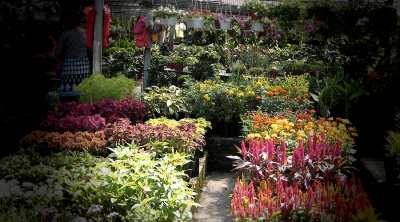
Beginning April 1, the country will reopen its borders that have been shut from international travelers since March 2020 as a consequence of the coronavirus pandemic.
This is a very crucial decision for the country because this will mark the first phase in relaxing travel restrictions imposed by the government two years ago to contain the virus.
Various border and movement control measures have been implemented by the government over the past two years to keep Malaysians safe.
Thankfully, beginning April 1 this year, it will be much easier for Malaysians to travel out of the country, something many of us have not been able to do since the start of the pandemic.
At the same time, foreign tourists will also be able to visit Malaysia more freely, enjoying our fabulous sandy beaches, learning more about our history and diverse cultures, as well as savoring our mouth-watering local food that has been well known across the world.
Arrival of foreign visitors and tourists is of utmost importance to us because it does not only help revive our pandemic-stricken tourist industry but also act as a catalyst for recovery of our national economy post-pandemic.
Before the pandemic, the tourist industry used to be a major contributor of our GDP. It contributed 13.3% to our GDP in 2019 with 26.1 million international visitors spending a total of RM86.14 billion.
In the meantime, other tourism-related sub-sectors such as retail, transportation and F&B are employing almost three million workers, contributing almost RM240.5 billion or 15.9% of the country’s GDP in 2019. This has helped increase the government’s tax revenue which is in turn spent to benefit the rakyat in terms of development projects, including the construction of schools, roads and hospitals.
Reopening the national borders gradually beginning October 2021 has been a positive step to revive the tourist industry. That said, the reopening of our international borders from April 1 has been much anticipated because it is an important move for economic recovery, as foreigners will now be able to visit our country, either for vacation or work.
I just travelled overseas myself for work on March 17, and was glad to see that KL International Airport was again packed with travelers while many shops at the airport have opened for business.
The finance ministry understands that the projection for tourist arrival this year may not match that of 2019. Moreover, the UN has estimated that international tourist traffic would only return to pre-pandemic levels earliest by 2024, while the emergence of the highly transmissible Omicron variant, the war between Russia and Ukraine, and sharp increase in commodity prices, especially oil, have further marred the prospects of immediate economic recovery.
Having said that, the reopening of national borders remains a positive development for Malaysia’s economy.
The 2022 gross value added for the tourism industry is projected at RM206.8 billion, or 12.6% of the GDP, and this is poised to contribute positively to the estimated 7% expansion in the services industry as well as the overall economy at between 5.5% and 6.5%.
To help the industry recover, the government has expanded the wage subsidy programme to the tourism sector this year.
In the 2022 Budget, some RM600 million has been set aside for this programme which is expected to benefit more than 330,000 employees and 26,000 employers.
The MOF has also extended until the end of this year the special tax exemption initiative for domestic tourism spending up to RM1,000.
Additionally, more than 20,000 tourism industry operators registered with the tourism ministry will also be entitled to RM85 million of assistance for three months. All this will hopefully help create 600,000 new job opportunities while bringing the unemployment rate down to less than 4% by the end of 2020.
The growth in the local economy will also be buoyed by the encouraging growth in external trade. In 2021, the country recorded a total trade volume of RM2.2 trillion. In January this year, we witnessed a whopping 25% expansion in external trade and another 17.5% in February.
What is more important is how the local financial institutions are going to support the industry after two years of pandemic. Measures such as RM600 million allocated under the PENJANA Tourism Financing facility and the BPMB rehabilitation scheme will definitely help.
Other financing schemes amounting to RM40 billion under the SemarakNiaga initiative have also been introduced to help local businesses recover.
As for micro SMEs, various interest-free financing schemes have also been launched, on top of loan moratorium up to 12 months.
Strong support from financial institutions is key to expedite the recovery of the tourist industry as one of the major contributors of our GDP.
For businesses badly hit by the pandemic these two years, equity financing and semi equity financing are two options they can consider to help them recover.
It is my sincere hope that financial institutions in this country will continue to do their best to facilitate the access of financing to this industry. An ever-expanding tourist industry will have a positive impact on many other support industries while reflecting the Keluarga Malaysia cooperation spirit for our shared prosperity.
(Tengku Zafrul bin Tengku Abdul Aziz is the Minister of Finance, Malaysia.)
ADVERTISEMENT
ADVERTISEMENT








































